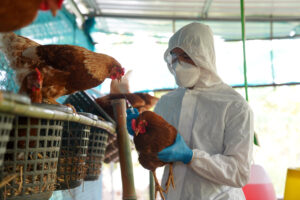Whether routine or for cause, every food processing facility under FDA jurisdiction will be inspected at some time by an FDA investigator. And, whether routine or for cause, every FDA inspection is a serious event. So the better you are prepared and the more you understand what FDA will be doing, the smoother the inspection will go – which is always better for you. Let’s talk first about the two types of inspections and when you could expect them. As directed by FSMA, FDA is required to conduct a routine inspection of high-risk food facilities once every three years, and of all others once every five years. FDA also can determine that more frequent visits of a specific facility are needed, based on factors such as its past history of inspection issues or recalls, the type of product produced, etc. The investigator may make a regular inspection or a FSMA-compliance inspection (i.e., focused on preventive controls, recall plans, supply chain program, or GMPs). A for-cause inspection is exactly what it sounds like – FDA has a reason to inspect your facility beyond that of a routine inspection. This could be because of a recall you initiated or a recall initiated by another firm in which your product or facility has been implicated – or is simply in the supply or distribution chain. It also could be the result the regulatory testing of your product, a consumer complaint, or an epidemiological link, generally detected today through whole genome sequencing (WGS). The FDA Visit. In either case, the inspection will usually be conducted during working hours. There may be one or several investigators, but upon arrival they are required to show their credentials and issue a signed Notice of Inspection (Form 482) to the top management official. The visit will begin with an opening meeting during which you will want to find out the reason for the visit if you’ve not already been informed. This will be followed by the inspection, and a closing meeting. The investigators will review your records, of which they may want to make copies, and may take swabs; the visit could be concluded within a few hours or could take a week or more. If you are subjected to the infamous “swabathon,” you can expect FDA to take 100 to 300 swabs over one or two days – including Zone 1 and potentially finished product. FDA will be looking for Salmonella and/or Listeria monocytogenes, and it could take up to two weeks to get final results on the sampling. During a swabathon, you have the right to take duplicate samples, but there are pros and cons to this. On the plus side, you can get results more quickly; however any positives FDA finds will overrule your findings. And if you do find a positive where FDA found a negative, you are in trouble. Whether or not you choose to take duplicate samples, I would advise that you take photographs and notes of each site swabbed, plan a holding program for Zone 1 and finished product, and plan to shut down/clean up post sampling. Preparing for FDA. Because FDA can show up at your facility at any time, you should be inspection ready every day. This is more than simply having your facility clean and processes in place, it means having a written SOP on how to manage the visit and who will be involved. Who needs to be informed at corporate? Who will lead the visit; who will accompany FDA – do you have back-up for each? Where will you take FDA initially? It also is important to regularly review your programs and documentation to ensure you are in compliance with all requirements. Is your Food Safety Plan written and complete with hazard analyses and preventive controls and a Preventive Control Qualified Individual (PCQI) identified? Are your monitoring, corrective actions, and validations all current? Are your supply chain approval records in order, including any Foreign Supplier Verification Program records, if applicable? Do you have a recall plan? Knowing what records and information FDA can request, and what you will provide when asked, also will not only help ensure you are prepared but will keep you from giving investigators more than is required. For example, while FDA will want documentation of your allergen controls and environmental monitoring, these do not have to be validated. That said, FDA can ask for everything except recipes, personnel records, and financial records. You need to be able to provide two years of records within 24 hours of the request, thus you’ll need to have a process in place for making copies of requested documents. An investigator may request more than you are required to provide, so be sure you understand what FDA is authorized to ask for. But you will want to carefully pick your battles – determining how important refusal may be, whether there would be negative impact if you do or don’t accede to a request. One very common “battle” is that of photography. And it can be a tough battle. In advising FDA to take photos for documentation, FDA’s Investigations Operations Manual 2019 says to not request permission first “because taking photographs is part of the Agency’s authority to conduct inspections as part of Section 704(a)(1) of the FD&C Act [21 USC 374(a)(1)].” If management objects, investigators are advised to cite two court cases. However, neither the statute nor the cases provide clear authority for FDA to take photos. But, once again, it is a matter of picking your battles, as a determined investigator can take it higher, ultimately involving legal personnel from both sides. As a general rule when working with FDA, it is advisable to always be courteous and open-minded, giving investigators what they request – but no more and no less. Don’t take a defensive stance or be adversarial, but do point out any misinterpretations they may make. Listen to what they have to say and, most importantly, stay with them at all times. Follow up. Should any non-compliances be found resulting in a Form 483 or Warning Letter, you will need to respond, in writing within 15 business days, to all the observations with corrective actions. Include thorough responses with timelines for action and follow up – and prepare for a repeat inspection. The Form 483 is not public but can be requested under the Freedom of Information Act (FOIA). Warning letters, however, are public and are picked up the media. Signaling the lack of satisfaction in response to a Form 483, they are a significant escalation of non-compliance. With regular FDA inspections required, and for-cause inspections common, your facility will be inspected at some point, and the best thing you can do for your business and yourself is to be prepared. Be inspection ready every day and have outside resources available should you need them. Having been an FDA official, I know the system and have built an authoritative team of experts at TAG that can help you prepare and manage FDA visits. Give us call today to ensure you are inspection ready. About The Acheson Group (TAG): Led by Former FDA Associate Commissioner for Foods Dr. David Acheson, TAG is a food safety consulting group that provides guidance and expertise worldwide for companies throughout the food supply chain. With in-depth industry knowledge combined with real-world experience, TAG’s team of food safety experts help companies more effectively mitigate risk, improve operational efficiencies, and ensure regulatory and standards compliance. www.AchesonGroup.com






